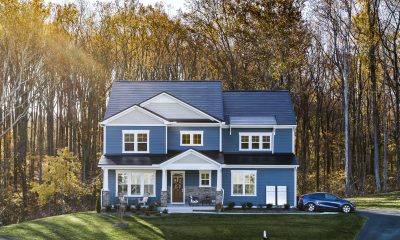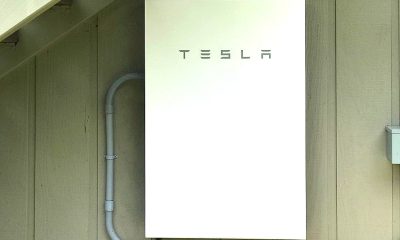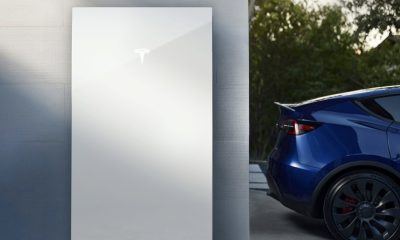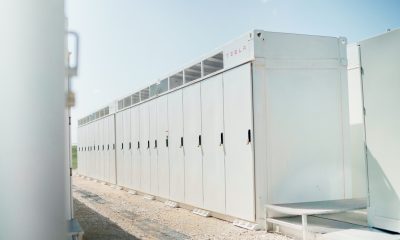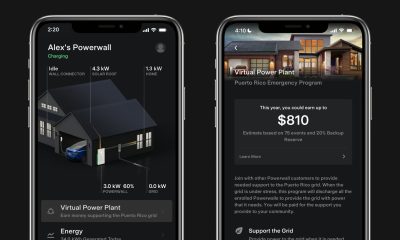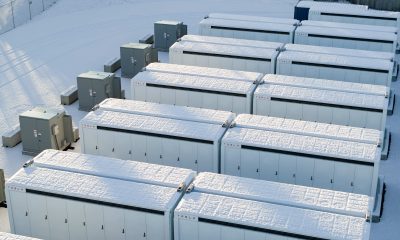Energy
Tesla on track to generate $500M from SolarCity merger, Solar Roof launch slated for second half of the year
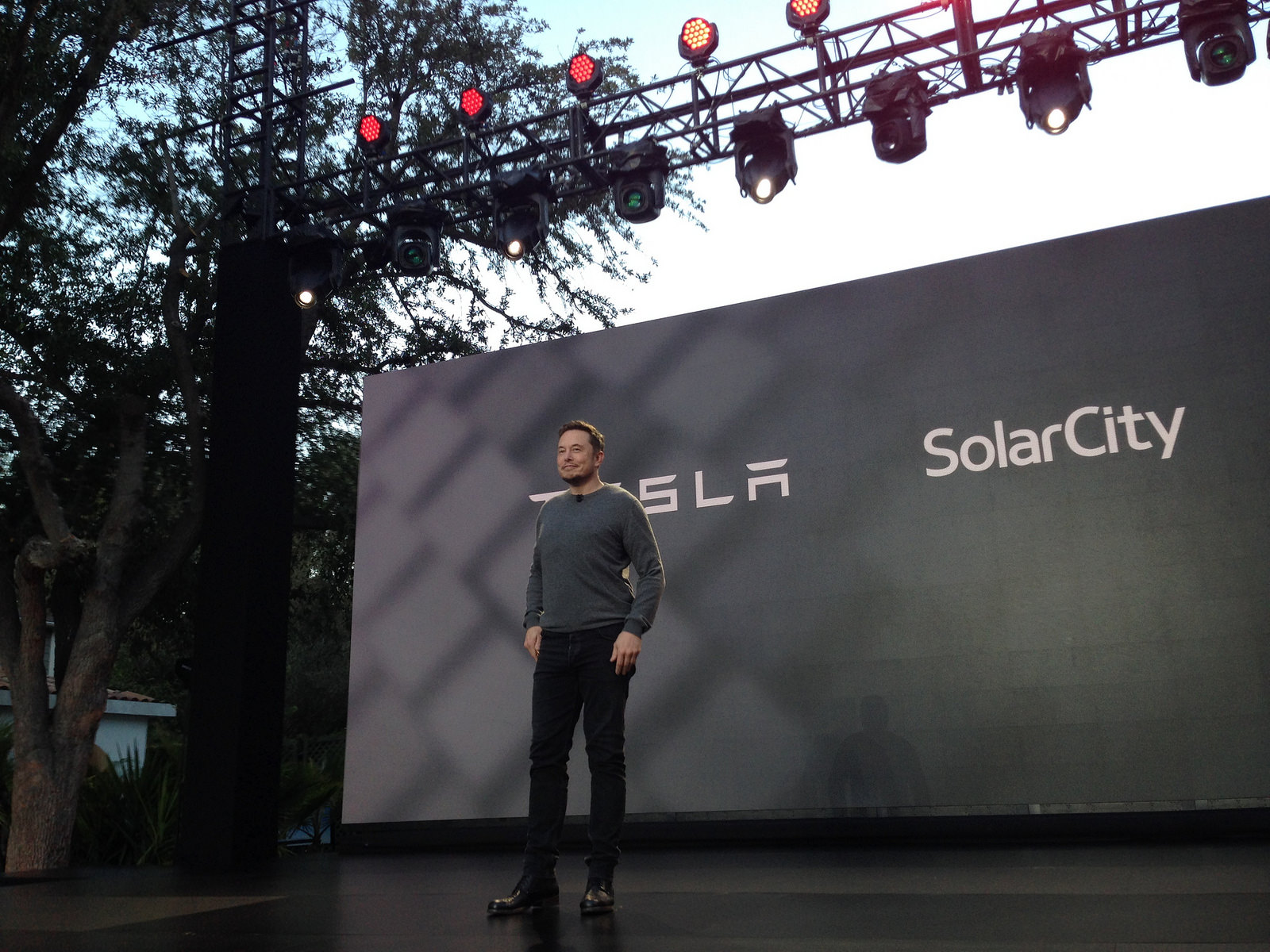
In November, shareholders approved a deal for Tesla to buy SolarCity Corp. in a transaction worth approximately $2.6 billion. Since that time, investors have pushed Tesla CEO Elon Musk to prove that this acquisition is fiscally responsible, with high expectations for the final quarter of 2016 and a positive outlook for 2017.
In the Tesla Q4 and full year 2016 financial results and Q&A webcast on Wednesday, SolarCity was well-celebrated as an essential element of “the world’s only integrated sustainable energy company, from generation to storage to transportation.”
Discussions around the Tesla Q4 financial statement included the results of SolarCity’s operations from the close of the acquisition on November 21 to December 31, 2016. Increases totaling Q4 GAAP operating expenses supported the growing Tesla business spectrum alongside $85 million of solar-related operating expenses since the acquisition of SolarCity. Moreover, Tesla also received $214 million in cash from the acquisition of SolarCity, which helped sweeten the Q4 report.
Tesla reports that it is “on track to generate $500M in cash” in the next two years. As Musk quipped at the beginning of the webcast, “I admire long term planning.” A significant component of that advanced fiscal forecast is the “achieve the cost synergies” that Tesla committed to upon acquiring SolarCity. Tesla outlined three ways that they intend to build the SolarCity.
- Cutting advertising spending: Ad Age commented in the past that “Tesla Motors has no advertising, no ad agency, no CMO, no dealer network. And that’s no problem.” As with today’s investor’s letter and webcast, the company receives positive coverage for posting its quarterly profits and announcing expansion of its product line and service networks. Musk, like many celebrity business people and politicians these days, uses Twitter to introduce company concepts and to generate buzz about everything Tesla— and that will extend more and more to SolarCity in the second half of 2017.
- Selling solar products in Tesla stores: The move to reinvent its retail sales strategy comes as part of Tesla’s long term business plan to promote a 360° sustainable energy lifestyle — complete with electric cars, solar power, and home battery storage. Selling a lifestyle and a way of thinking, Tesla retail store reconfiguration has deepened its already formidable brand, which offers a premium lifestyle experience that complements a high-tech image. SolarCity products, as part of this melange, will become an essential element of the Tesla product catalog at retail locations, with emphasis on markets with the most demand for solar energy products.
- Shifting away from leasing solar systems: At the end of 2016, SolarCity CEO Lyndon Rive had announced that the company expected to reduce the number of leases while loans and cash purchases increase. Now the market is expected to trend steadily toward direct ownership as loan designs become more appealing, system costs continue to fall, and more people see the benefit in a purchase.
Tesla is well-positioned in the alternative energy sector with SolarCity, as solar power installations doubled in 2016 over 2015 as more and more areas of the U.S. began pulling their power from the sun. Indeed, for the first time, solar power installations formed the largest group of electricity generating capacity of any energy source. Nearly 40 percent of new power generation projects added last year were solar, in terms of electrical production capacity. A record 22 states each added more than 100 megawatts.
The trend should continue in the next two years, consistent with the Tesla SolarCity viability plan, according to a report by GTM Research. They say that the community solar segment is on verge of becoming a mainstream driver of U.S. solar market growth. Starting in 2017, community solar is expected to consistently drive 20% – 25% of the annual non-residential PV market and become a half-gigawatt annual market by 2019.
Energy
Tesla VP hints at Solar Roof comeback with Giga New York push
The comments hint at possible renewed life for the Solar Roof program, which has seen years of slow growth since its 2016 unveiling.

Tesla’s long-awaited and way underrated Solar Roof may finally be getting its moment. During the company’s Q3 2025 earnings call, Vice President of Energy Engineering Michael Snyder revealed that production of a new residential solar panel has started at Tesla’s Buffalo, New York facility, with shipments to customers beginning in the first quarter of 2026.
The comments hint at possible renewed life for the Solar Roof program, which has seen years of slow growth since its 2016 unveiling.
Tesla Energy’s strong demand
Responding to an investor question about Tesla’s energy backlog, Snyder said demand for Megapack and Powerwall continues to be “really strong” into next year. He also noted positive customer feedback for the company’s new Megablock product, which is expected to start shipping from Houston in 2026.
“We’re seeing remarkable growth in the demand for AI and data center applications as hyperscalers and utilities have seen the versatility of the Megapack product. It increases reliability and relieves grid constraints,” he said.
Snyder also highlighted a “surge in residential solar demand in the US,” attributing the spike to recent policy changes that incentivize home installations. Tesla expects this trend to continue into 2026, helped by the rollout of a new solar lease product that makes adoption more affordable for homeowners.
Possible Solar Roof revival?
Perhaps the most intriguing part of Snyder’s remarks, however, was Tesla’s move to begin production of its “residential solar panel” in Buffalo, New York. He described the new panels as having “industry-leading aesthetics” and shape performance, language Tesla has used to market its Solar Roof tiles in the past.
“We also began production of our Tesla residential solar panel in our Buffalo factory, and we will be shipping that to customers starting Q1. The panel has industry-leading aesthetics and shape performance and demonstrates our continued commitment to US manufacturing,” Snyder said during the Q3 2025 earnings call.
Snyder did not explicitly name the product, though his reference to aesthetics has fueled speculation that Tesla may finally be preparing a large-scale and serious rollout of its Solar Roof line.
Originally unveiled in 2016, the Solar Roof was intended to transform rooftops into clean energy generators without compromising on design. However, despite early enthusiasm, production and installation volumes have remained limited for years. In 2023, a report from Wood Mackenzie claimed that there were only 3,000 operational Solar Roof installations across the United States at the time, far below forecasts. In response, the official Tesla Energy account on X stated that the report was “incorrect by a large margin.”
Energy
Tesla China’s Megafactory helps boost Shanghai’s battery exports by 20%: report
Located in the Lingang New Area of the Shanghai Free Trade Zone, the Tesla Megafactory has been running at full throttle since opening in February.
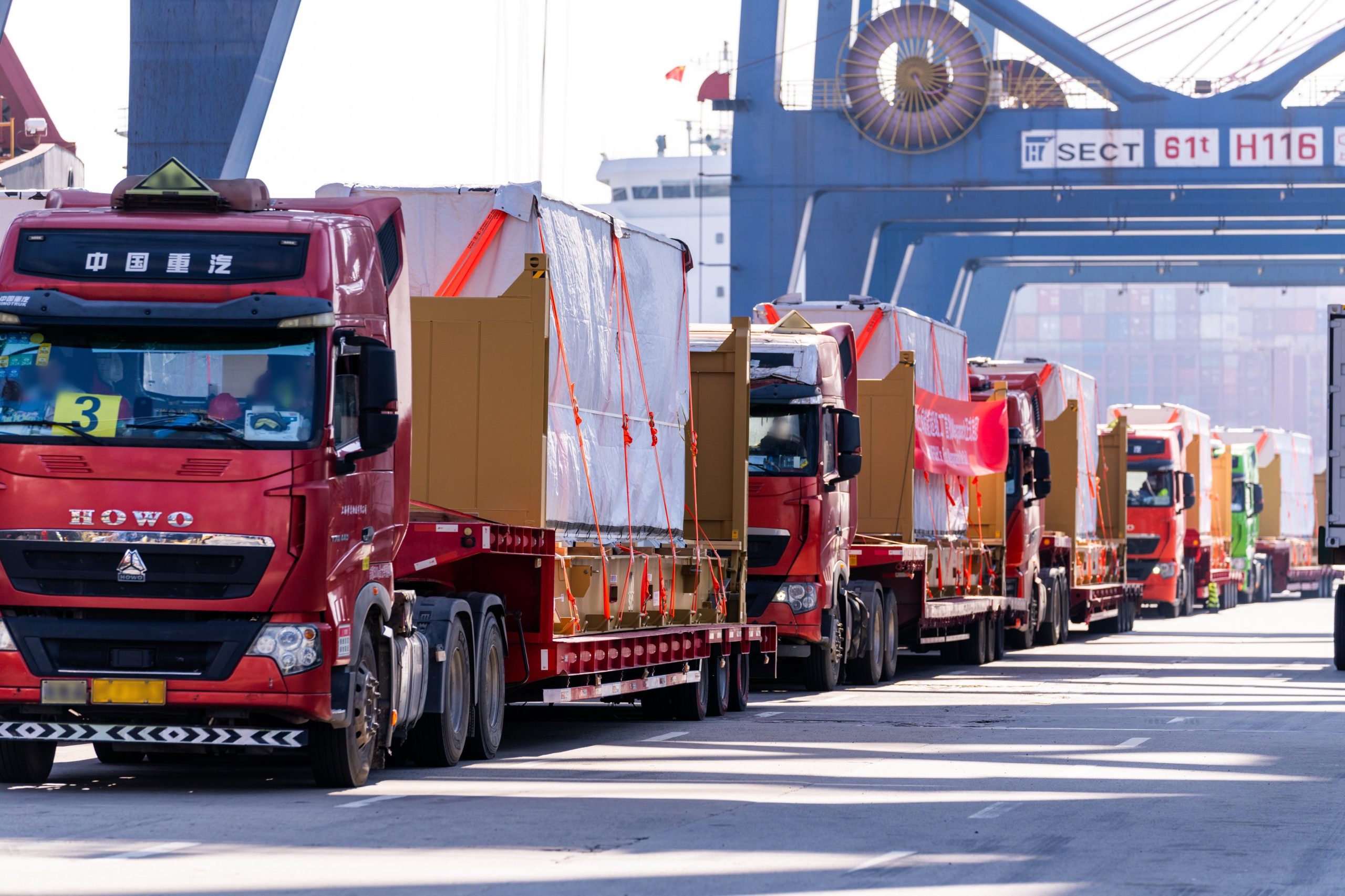
Reports from China have indicated that the Tesla Shanghai Megafactory has become a notable player in China’s booming battery export market.
Located in the Lingang New Area of the Shanghai Free Trade Zone, the Tesla Megafactory has been running at full throttle since opening in February. It produces Tesla Megapack batteries for domestic and international use.
Tesla Shanghai Megafactory
As noted in a report from Sina Finance, the Tesla Shanghai Megafactory’s output of Megapack batteries helped drive a notable rise in lithium battery shipments from the city in the first three quarters of 2025. This is quite impressive as the Megafactory is a rather young facility, though it has been steadily increasing its production capacity.
“The establishment of this benchmark factory has not only driven the rapid development of Shanghai’s energy storage industry but also become a new growth engine for foreign trade exports. Driven by the Tesla energy storage factory’s opening, Shanghai’s lithium battery exports reached 32.15 billion yuan ($4.5 billion) in the first three quarters, a 20.7% increase,” the publication wrote.
Ultimately, the Shanghai Megafactory has proved helpful to the city’s “new three” industries, which are comprised of new energy vehicles, lithium batteries, and photovoltaic systems. Exports of the “new three” products reached 112.17 billion yuan ($15.7 billion), a 6.3% year-over-year increase during the same period. The city’s total trade volume grew 5.4% year-over-year as well, with exports up 11.3%, driven largely by the clean energy sector’s performance.
Energy storage is helping Shanghai
Since opening in February, the Shanghai Megafactory has been firing on all cylinders. In late July, Tesla Energy announced that the new battery factory has successfully produced its 1,000th Megapack unit. That’s quite impressive for a facility that, at the time, had only been operational for less than six months.
Speed has always been a trademark of the Shanghai Megafactory. Similar to Tesla’s other key facilities in China, the Megafactory was constructed quickly. The facility started its construction on May 23, 2024. Less than a year later, the site officially started producing Megapack batteries. By late March 2025, Tesla China noted that it had shipped the first batch of Megapack batteries from the Shanghai plant to foreign markets.
Energy
Tesla recalls Powerwall 2 units in Australia
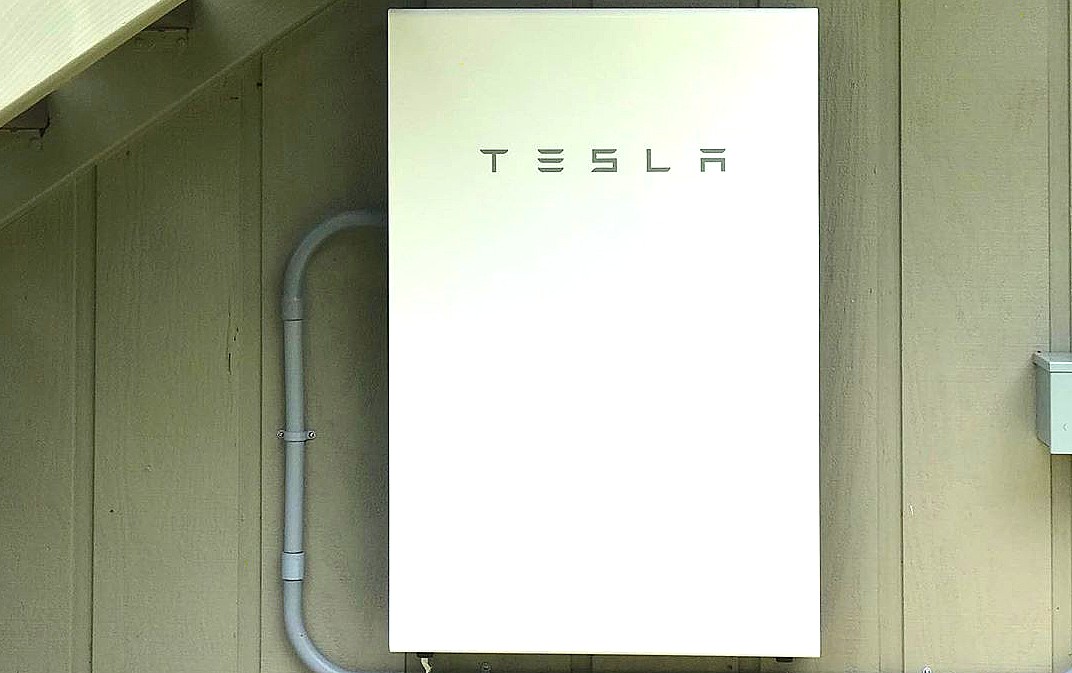
Tesla will recall Powerwall 2 units in Australia after a handful of property owners reported fires that caused “minor property damage.” The fires were attributed to cells used by Tesla in the Powerwall 2.
Tesla Powerwall is a battery storage unit that retains energy from solar panels and is used by homeowners and businesses to maintain power in the event of an outage. It also helps alleviate the need to rely on the grid, which can help stabilize power locally.
Powerwall owners can also enroll in the Virtual Power Plant (VPP) program, which allows them to sell energy back to the grid, helping to reduce energy bills. Tesla revealed last year that over 100,000 Powerwalls were participating in the program.
Tesla announces 100k Powerwalls are participating in Virtual Power Plants
The Australia Competition and Consumer Commission said in a filing that it received several reports from owners of fires that led to minor damage. The Australian government agency did not disclose the number of units impacted by the recall.
The issue is related to the cells, which Tesla sources from a third-party company.
Anyone whose Powerwall 2 unit is impacted by the recall will be notified through the Tesla app, the company said.
-

 Elon Musk2 weeks ago
Elon Musk2 weeks agoSpaceX posts Starship booster feat that’s so nutty, it doesn’t even look real
-

 Elon Musk2 weeks ago
Elon Musk2 weeks agoTesla Full Self-Driving gets an offer to be insured for ‘almost free’
-

 News2 weeks ago
News2 weeks agoElon Musk confirms Tesla FSD V14.2 will see widespread rollout
-

 News2 weeks ago
News2 weeks agoTesla is adding an interesting feature to its centerscreen in a coming update
-

 News2 weeks ago
News2 weeks agoTesla launches new interior option for Model Y
-

 News2 weeks ago
News2 weeks agoTesla widens rollout of new Full Self-Driving suite to more owners
-

 Elon Musk2 weeks ago
Elon Musk2 weeks agoTesla CEO Elon Musk’s $1 trillion pay package hits first adversity from proxy firm
-

 News1 week ago
News1 week agoTesla might be doing away with a long-included feature with its vehicles


